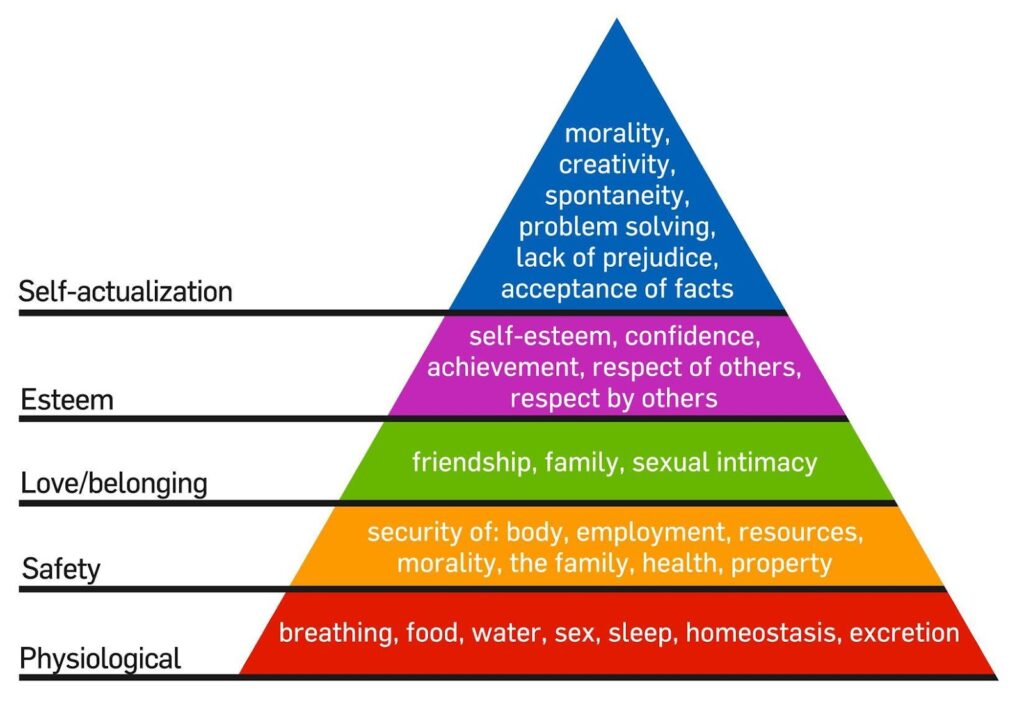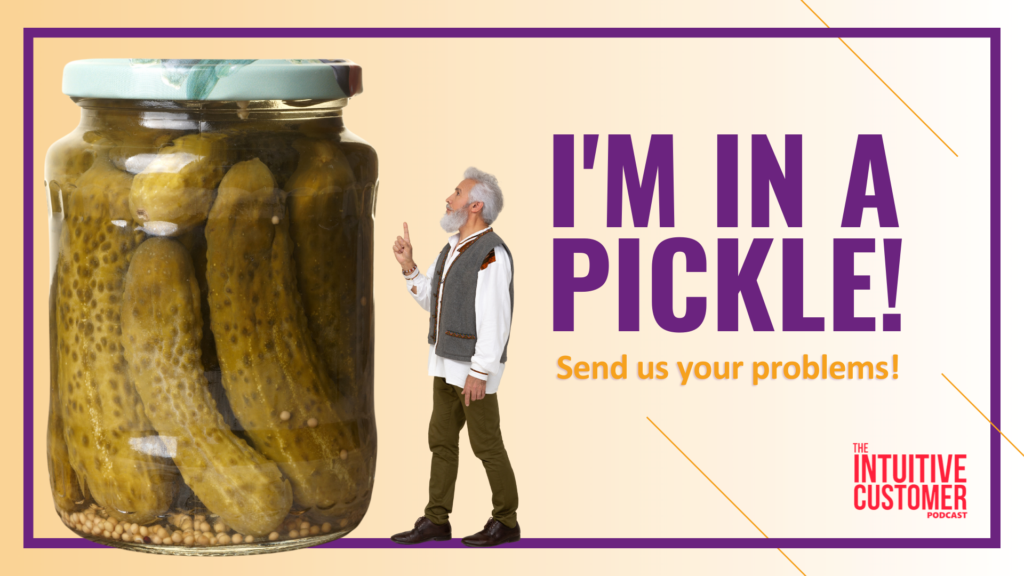Many organizations are trying to figure out how to win the hearts and minds of customers. Unfortunately, they are not like to find the answers in the ways they have grouped customers in to segments. The designation of small, medium, and large customers doesn’t reveal much about what customers want or why they are in the group they are.
Perhaps a different tack is in order. If a company wants to know how to win the hearts and minds of customers, they must first understand how customers feel and how they think. Much of that thinking centers around the self.
Understanding customers’ self-perceptions is essential for successful targeted customer strategy. Lucky for us, Sara Dommer, Ph.D. Assistant Professor of Marketing at Penn State Smeal College of Business was a guest on a recent podcast, and she explains perception of self and how it drives customer behavior.
Dommer says the definition of self is a hard one to nail down. Twenty different research papers will likely give you twenty different meanings. However, she views self as everything that makes you, you. For example, Dommer sees herself as a Mom, Professor, wife, and former intramural dodgeball player.
Dommer says certain personality traits relate to people’s identities more than others. For example, Dommer says her mom and professor’s identity became blurred during the pandemic. However, the blurring of these two parts of her life is an excellent example of how these different aspects of the self work together and influence customer behavior.
How Would You Describe Yourself?
Dommer says that when you ask people to describe themselves, some start with personality traits. For example, they might say, “I’m funny, intelligent, and [insert whatever personality trait you might have]. Others begin with broader identities, like their roles in life, marital status or what they do for a living, and so on.
However, we also define ourselves by what we are not. For example, ensuring that everyone knows you are not a fan of the local football team or a popular genre of music or film that might be associated with your “type” is a significant part of people’s identity. In the US, an example of using what they aren’t to define oneself might be to clarify that they are far bluer than the red state where they live.
In addition, there is also our public versus private selves. Sometimes, these identities overlap, meaning certain parts about us are both a public part of who you are and a private part. But, then, other parts of us are strictly one or the other.
Moreover, there is the actual self vs. the aspirational self. So, who we currently are, how we perceive ourselves, and the people we want to be.
Let’s not forget that other-selves are lurking around there, too. There are the selves we are afraid to become or the past selves we are leaving behind.
So, Dommer says that’s why it’s challenging to define the idea of self. It is many, many things all at the same time.
Wearing Our Different Self Hats
People talk about like wearing different hats in their lives. People switch between the different roles they play throughout the day. They “put on different hats,” which relates to the responsibilities or perspectives of that part of their life. Dommer says this is another side effect of self-perception.
 Research suggests that these different roles and how strictly we separate them affect our customer behavior. Dommer has research that indicates how much we overlap our parts affects what we buy and don’t. For example, if a person saves some money on a work purchase, would they then feel like they could spend the savings on taking their child to a special outing (if they are self-employed, of course)? Dommer’s research suggests that whether you connect the work savings with the personal spending depends on whether you wear both the self-employed worker and the parental hats or wear them one at a time. Our mental accounting is influenced by how integrated these two self-concepts are.
Research suggests that these different roles and how strictly we separate them affect our customer behavior. Dommer has research that indicates how much we overlap our parts affects what we buy and don’t. For example, if a person saves some money on a work purchase, would they then feel like they could spend the savings on taking their child to a special outing (if they are self-employed, of course)? Dommer’s research suggests that whether you connect the work savings with the personal spending depends on whether you wear both the self-employed worker and the parental hats or wear them one at a time. Our mental accounting is influenced by how integrated these two self-concepts are.
My wife Lorraine has weighed in on this crossover before. Usually, it comes up when she asks me something, and I use my management skills on her. She usually says, “You are not at work now.” Dommer thinks that is because my two roles have too much integration, which eliminates those boundaries between managing your team and personal life.
The Hierarchy of Creating Self
Many of you are likely familiar with Maslow’s hierarchy of needs.
The top triangle on the pyramid is usually labeled s elf-actualization. Self-actualization is the fundamental understanding of who you are, or at least the goal state.
elf-actualization. Self-actualization is the fundamental understanding of who you are, or at least the goal state.
As you can see, self-actualization comes right after esteem. So, you could say that indicates that once you feel good about yourself, the next level is the actualization of that. It is feeling of “being comfortable in your skin.”
This self-understanding guides your behavior. When your thoughts and feelings affirm your concept of self, you repeat them consistently, creating the cycle of affirmation.
The Power of Reflective Messaging
Now, let’s introduce messaging. Many of our marketing communications messages are about convincing you that this product says something about you. This product is for you, and that boils down to who you are and the self.
This approach implies that organizations need to understand the different segments of the self. For example, how will you speak to customers if you don’t know who your customer is?
Therefore, every organization’s first question should be, who is our customer? This understanding of people is essential.
Also, it is essential to break it down into more than demographic information. Knowing that a customer is a 40-year-old man from New Jersey is not enough information. However, it is easy information to gather, which is why demographics are ubiquitous in so many segmentation exercises. However, if you know that he is a 40-year-old man from New Jersey who enjoys cycling and drinks craft beer, you learn more about him and how to talk to him.
 Dommer says much research suggests that consumers see themselves reflected in products and brands. This reflection of self leads to beneficial purchase behaviors. She says that companies recognize this and are capitalizing on it in unique ways.
Dommer says much research suggests that consumers see themselves reflected in products and brands. This reflection of self leads to beneficial purchase behaviors. She says that companies recognize this and are capitalizing on it in unique ways.
For example, NikeID’s Made For You program where you can create your own Nike shoe in whatever color and style you want.
Nike isn’t the only one exploring the self. The M&M characters are getting nuanced, too. The press release about the program explains the idea is to create a world where everyone feels they belong.
So, What Should You Do with This Information?
Practically speaking, there are a few implications Dommer’s research has on experiences. As a Customer Experience professional tasked with managing customer behavior and outcomes, here are a few practical suggestions:
- Start with understanding customers. Your customers have perceptions of themselves, and you should be aware of those.
- Then, follow up with segmentation targeting. Once you know who customers are and how they view themselves, group them into like-minded clusters so you can target them.
- Reflect customers’ selves at them in unexpected ways. Then, look for ways to reflect that self-image to customers and attract them to your product or service. There are obvious areas to do this, like marketing messaging and customer communications, but there is another level. You could use those concepts in packaging or consumption, too. For services, it could be in the follow-up practices you employ.
It’s fascinating how many decisions are driven by self-perception. We can gain many benefits as marketers, as customer experience professionals, by understanding who people are and what’s important to them.
This information about the self is the next stage of segmentation and targeting. If you have developed your segments and targets, the next step is to understand them. And that understanding is tightly linked to how these customers see themselves and who they want to be. Moreover, it serves what seems to be a fundamental need for self-expression and self-identity.
If you have a business problem that you would like some help with, contact me on LinkedIn or submit your pickle here. We would be glad to hear from you and help you with your challenges.
There you have it. No promotions, no gimmicks, just good information.
Think reading is for chumps? Try my podcast, The Intuitive Customer instead. We explore the many reasons why customers do what they do—and what you should do about it. Subscribe today right here.
Verint sponsors this article.
Verint helps the world’s most iconic brands build enduring customer relationships by connecting work data and experiences across the enterprise. The Verint Customer Engagement Cloud Platform draws on the latest advancements in AI and analytics, an open cloud architecture, and the science of customer engagement to meet shifting customer interactions and their ever-increasing demands.



